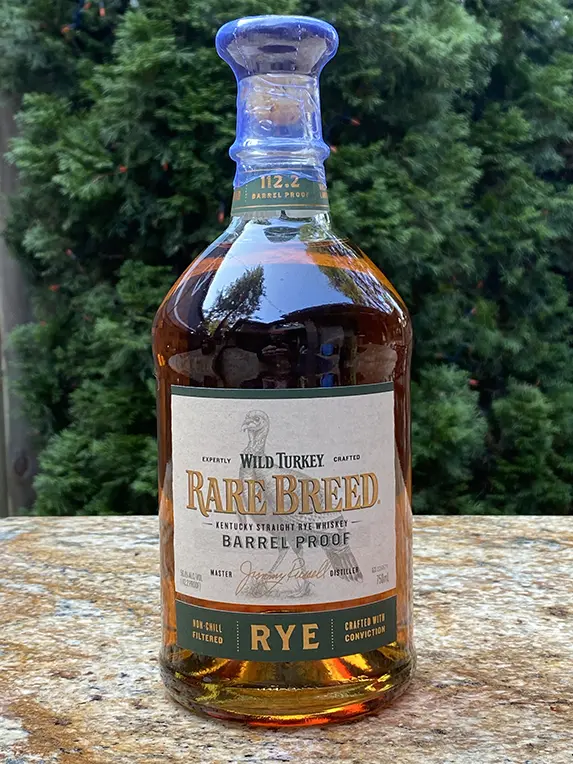Rye whiskey has a storied past, a bold flavor profile, and a unique place in the pantheon of spirits. Revered by enthusiasts and connoisseurs alike, rye whiskey brings a spice-forward complexity that distinguishes it from other types of whiskey. In this detailed exploration, we’ll delve into rye whiskey’s history, production process, flavor profile, legal definitions, and its role in cocktail culture.



Rye whiskey is an American whiskey that gets its unique flavor from using rye as the primary grain in the mash bill. While most bourbons use corn as the primary grain, rye bourbons use at least 51% rye, which gives them a spicier flavor. Rye bourbons are also known for being particularly high in proof, contributing to their bolder flavor.
Rye whiskey is a type of American whiskey primarily made from rye grain. By law, it must contain at least 51% rye in its mash bill, with the remainder typically comprising corn and malted barley. This distinct grain composition gives rye whiskey its signature spicy, dry character.
Although rye whiskey and bourbon share similarities in production, their differences in grain content and flavor profiles make them unique. While bourbon is sweet and smooth, rye whiskey offers a sharp, robust experience that appeals to adventurous palates.
Rye whiskey’s origins in North America trace back to the late 17th and early 18th centuries when European settlers brought whiskey-making traditions to the New World. Scottish and Irish immigrants were instrumental in shaping American whiskey culture, but it was German and Dutch settlers who introduced rye grain as the key ingredient. Rye grew abundantly in the fertile farmlands of Pennsylvania and Maryland, making it a natural choice for distillers.
By the late 18th century, rye whiskey had become a staple in the American spirits industry. Pennsylvania and Maryland emerged as the heartlands of rye whiskey production. During this period, rye whiskey became the foundation of many classic American cocktails, cementing its place in the burgeoning cocktail culture of the time.
The passage of Prohibition in 1920 dealt a severe blow to rye whiskey. Many distilleries were forced to close, and rye whiskey struggled to regain its footing even after Prohibition ended in 1933. The rise of bourbon and blended whiskies further overshadowed rye, relegating it to a niche segment of the market.
The late 20th and early 21st centuries have witnessed a rye whiskey renaissance. A growing appreciation for craft spirits and classic cocktails has revitalized interest in rye whiskey, leading to a surge in production and innovation. Today, rye whiskey is celebrated as a versatile and dynamic spirit, embraced by both established distilleries and craft producers.
The production process for rye whiskey is similar to that of other whiskeys, but the use of rye grain significantly impacts the flavor and texture.
The mash bill, or the recipe of grains used, is critical to rye whiskey’s character. To meet the legal definition, at least 51% of the mash bill must be rye. The remaining grains typically include corn, which adds sweetness, and malted barley, which aids in fermentation.
The ground grains are mixed with water and cooked to release their starches. Yeast is then added to the mash, initiating fermentation. During this process, the yeast converts sugars into alcohol, creating a liquid known as “distiller’s beer.”
The fermented mash is distilled in copper stills or column stills. Distillation purifies the liquid and concentrates the alcohol, resulting in a high-proof spirit. The distilled liquid, known as “new make” or “white dog,” is clear and unaged at this stage.
Rye whiskey is aged in new, charred oak barrels. The interaction between the whiskey and the charred wood imparts flavors of vanilla, caramel, and spice while softening the spirit’s harsh edges. By law, rye whiskey must be aged for at least two years to be labeled as “straight rye whiskey.”
After aging, the whiskey is filtered and diluted with water to achieve the desired proof. Some producers may bottle their rye at cask strength for a more robust flavor experience.
For more from The Bourbon Wall, check out our posts on our Blog Page.
Like this page? Feel free to share with your friends, family, and network by clicking the icons below for your favorite social media outlet: